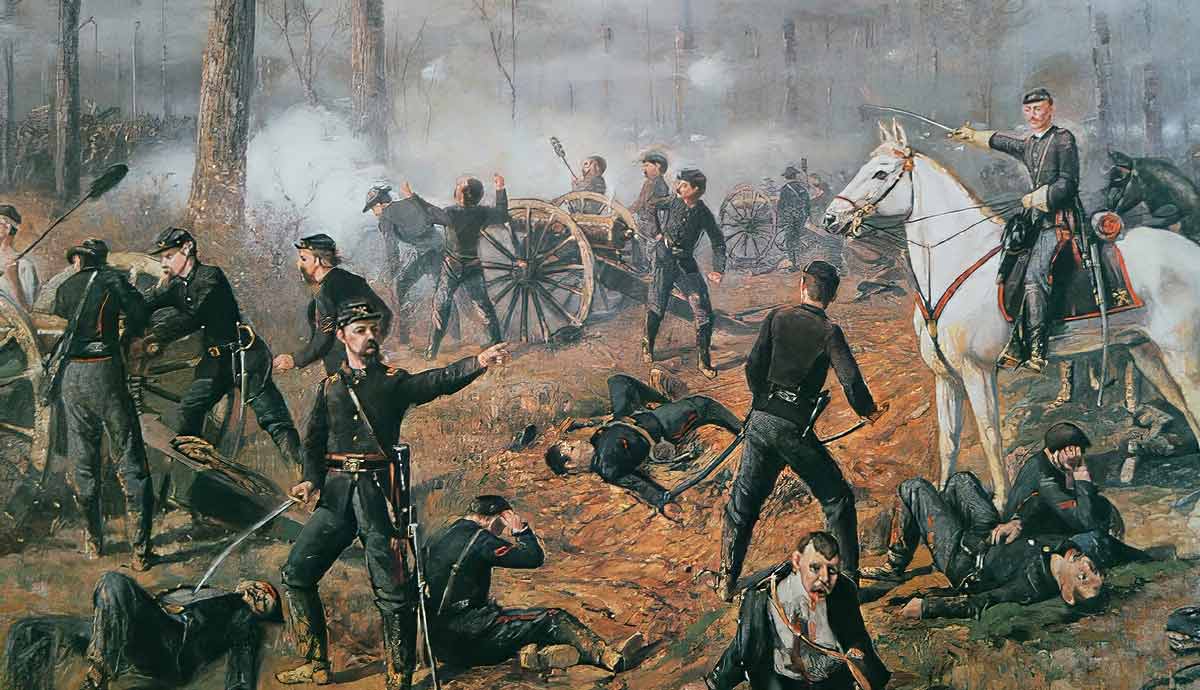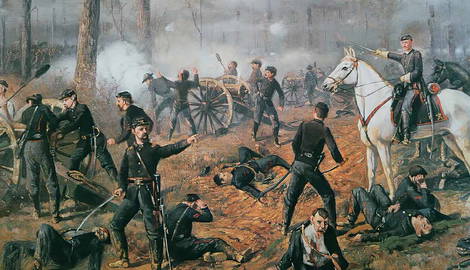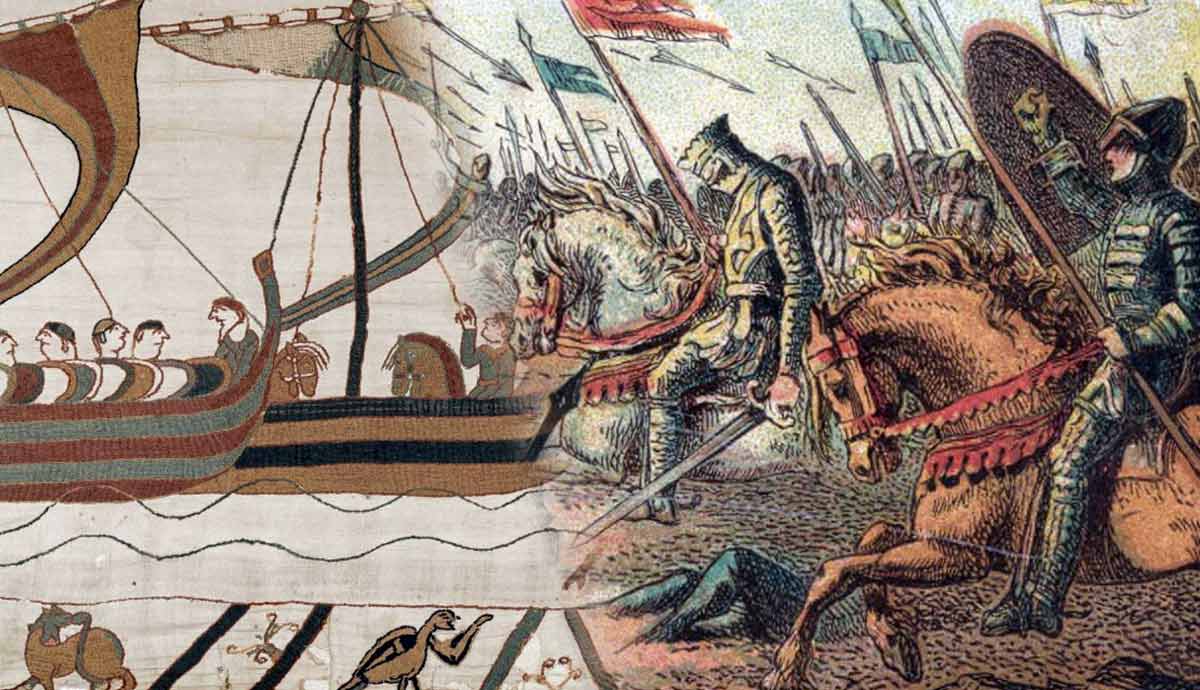
When the US Civil War erupted in 1861, the Union had to decide on a strategy to retake Confederate territory. With the vaunted Army of Northern Virginia protecting the Confederate capital of Richmond, Virginia, the Union began invading from the Western Theater. One major goal: seize control of the Mississippi River to allow Union troops to move south and block the ability of Confederate troops to travel north.
Victory Goes to the Union

The Battle of Shiloh was a victory for the Union forces of General Ulysses S. Grant. Grant was hoping to secure the Tennessee River for the Union and allow it to ship troops deep into Confederate territory. Because the Confederacy lacked many railroads, the Union could severely limit its troop movement by successfully seizing control of rivers like the Mississippi, Cumberland, and Tennessee. This would also divide the Confederate States of America into separate zones, allowing it to be reclaimed section by section.
Shiloh was a Confederate counterattack after Grant had seized Fort Henry and Fort Donelson earlier in the year. Confederate forces under General Albert Sidney Johnston struck with a surprise attack on April 6, 1862. The surprise attack was initially successful, but Union reinforcements soon arrived, and General Johnston was shot and killed, resulting in loss of command. Although the Confederates ended the day having gained some ground, Grant counterattacked the next day after linking up with the forces of fellow general Don Carlos Buell. The Confederates retreated to Corinth, Mississippi.
Timeline of the Battle of Shiloh

Confederate General Albert Johnston hoped for a major strike to knock Union forces out of Tennessee. After consolidating his forces, Johnston mobilized on April 3, 1862, hoping to catch Union general Ulysses S. Grant before he could link up with comrade Don Carlos Buell and add 20,000 additional soldiers to his current 45,000.
By the night of April 5, Johnston’s forces were only a few miles from Grant’s near the small town of Pittsburg Landing, Tennessee. The area is heavily forested, giving the Confederates the advantage of cover.

On the morning of April 6, Johnston’s forces struck, surprising Grant’s troops. Steadily, the Union troops were forced back. However, luck faded for the Confederates in the afternoon when Johnston was struck in the leg by a bullet and suffered a torn artery. Johnston bled to death and was replaced by Piere G.T. Beauregard. Unaware of the true battlefield situation, Beauregard halted the Confederate attacks, allowing Union general Buell to arrive overnight and reinforce Grant.
The next morning, April 7, Grant’s larger force counterattacked, forcing the Confederates back. After Union ships arrived and provided additional firepower from the Tennessee River, Beauregard decided a retreat was necessary at around 3:00 PM.
What Caused the Battle of Shiloh?

The Confederacy lacked the manpower and industrial might of the Union and could not easily protect its vast borders. As a result, Union forces were able to easily begin retaking chunks of the Confederacy in the Western Theater. One target was Tennessee, which stretched from east to west. Fort Donelson overlooked the Cumberland River, which would be a major wartime asset if seized. Instead of negotiating cautiously, as was expected, Union General Ulysses S. Grant demanded the immediate surrender of the fort to his 27,000 troops. This show of force won Grant praise as a standout among the Union’s notoriously cautious crop of generals.
Having lost Forts Henry and Donelson, the Confederacy needed to strike back with force. A static defense that attempted to protect the borders was insufficient, given the Union’s major advantage in manpower. As a result, Confederate General Albert Sidney Johnston was forced to pull his men to a central location–Corinth, Mississippi–and plan a counterattack. When he realized that Grant and Buell were going to link up, creating a massive army, he decided he had to strike first.
Why Was the Battle of Shiloh Significant?

The Battle of Shiloh was significant in that it revealed the Confederacy could not hold back the might of the Union. A defensive war would not be sufficient. Johnston had already had to consolidate his troops to strike back at Grant, leaving swaths of his region of the South undefended. The Union could simply wear out the Confederacy. As a result, the Confederacy needed to change its tactics. Instead of adopting a purely defensive posture, the South might be able to frighten the North by striking where least expected…in the North itself.
Another significant effect of Shiloh was the North’s surprise about Southern resistance. Grant was allegedly taken by surprise by Johnston’s forces, having not predicted that the Confederates could attack with such force. Civilians in the North were surprised by the savage intensity of the battle, which was the bloodiest of the war up to that point. Many had thought the war would be over soon, given the Union’s relative ease at retaking New Orleans and other chunks of Confederate territory. Thus, the Confederate attack in force at Shiloh revealed that the Civil War was far from over and would be a painful, bloody conflict. Despite outrage at the high casualties Grant had sustained, Union President Abraham Lincoln famously defended the general, saying, “I can’t spare this man – he fights.”
5 Facts About the Battle of Shiloh

1. Casualties
The Union, which was hit by Johnston’s surprise attack, suffered some 13,000 casualties during the two-day battle. Johnston’s forces, by contrast, only suffered about 10,000, though the number of confirmed killed in battle was almost identical at about 1,700 per side. The bulk of the 3,000 additional casualties suffered by the Union came from missing and captured men. The press in the North were outraged at the high casualties suffered by Grant, and some demanded his removal as a Union general.
2. Commanders
Union forces were led by Ulysses S. Grant, who had made a name for himself two months earlier when he seized Forts Henry and Donelson. He was reinforced on the second day of the battle by General Don Carlos Buell, a veteran of the Seminole War against Native Americans in Florida and a fellow Mexican-American War veteran. When the Civil War began, Buell had been a relatively junior military officer in California before being recalled to train Union troops. He advised Grant to seize the Tennessee river forts, leading to his promotion to major general in March 1862, shortly before the Battle of Shiloh.
Confederate forces were led by Albert Sidney Johnston, a Texas Revolution veteran who had moved to the state ten years after graduating from West Point. He served as Secretary of War for the Republic of Texas before returning to the United States in 1840. Three years later, he moved back to Texas and later took part in the Mexican-American War. Now part of the US Army again, Johnston was sent to the Pacific Department (ironically, where Buell himself was stationed) before resigning his command upon the outbreak of the Civil War after the Battle of Fort Sumter. Like Robert E. Lee, Johnston was offered a military command with the Union but turned it down.
3. Number of Forces Involved
The armies of Johnston and Grant were evenly matched on April 6, the first day of battle. Both men commanded approximately 45,000 men. On the second day, however, Buell arrived with 20,000 men of his own. This gave the Union some 65,000 soldiers versus only 45,000 for the Confederates. The numerical advantage leads Johnston’s successor, Beauregard, to decide to retreat to Corinth, Mississippi on the afternoon of April 7 after much evenly-matched fighting.
4. Visiting Shiloh National Military Park
Today, the battlefield can be visited as a facility of the National Park Service. There is a visitor center and the Corinth Civil War Interpretive Center. This interpretive center offers hands-on programs for visitors to experience what life was like for Civil War soldiers. There is also a Contraband Camp, which is a historical re-creation of camps made by escaped slaves who fled to Union lines. Visitors to the area tend to stay in the town of Corinth, Mississippi, where there are chain hotels in addition to bed-and-breakfast-type lodging.
5. Trivia: Highest-Ranking Kill of the War
Confederate General Albert Sidney Johnston, commander of the Western Theater, was shot in the thigh on the first day of battle and bled to death quickly. Allegedly, he did not realize he was in grave condition until it was too late, dying with a tourniquet still in his pocket. After the war, his remains were returned to Austin, Texas. Due to his depth of experience, Johnston was considered one of the finest soldiers in the country, and Confederate leaders like President Jefferson Davis bemoaned his loss as a turning point in the war.
Aftermath of Shiloh: Confederacy Goes on the Offensive

Shortly after the Battle of Shiloh, General Robert E. Lee was promoted to command the Confederacy’s strongest army: the Army of Northern Virginia. He knew that the Confederacy would simply be ground down if it continued to fight from a defensive posture. Lee wanted to take the initiative to surprise the North and hit them when they were unprepared. Union armies advancing into the South were already organized but were unlikely to be at the ready on their home turf. Moving the war into the North would also relieve pressure on the South, both from Union troops who would be diverted and from the overuse of Southern farms. In the North, Confederate troops could resupply from Northern farms.
Lee also anticipated that going on the offensive would put political pressure on Union President Abraham Lincoln to seek peace. Thus far, citizens in the North had faced little destruction from the war. After a brief invasion of Maryland, Lee planned to tell Northerners that deciding to continue the war was entirely up to Lincoln. Hopefully, voters in the November 1862 midterm elections would then pressure Lincoln and the Republican Party to seek a peace deal and allow the Confederate States of America to remain independent. Lee successfully lobbied Confederate President Jefferson Davis to allow this invasion of Maryland, which culminated in the bloody Battle of Antietam – a Union victory.










